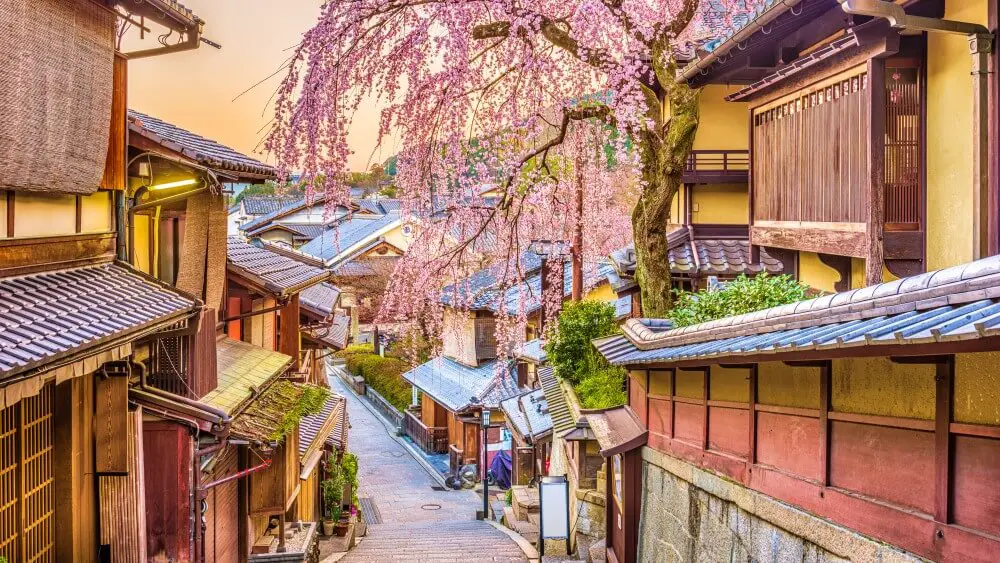
Asia is a huge continent and the countries within it vary greatly. Japan in the Far East has little in common with Kazakhstan in Central Asia, India in Southern Asia or Thailand in Southeast Asia.
This lack of homogeneity makes it difficult to write a definitive guide for travel through Asia, but it is also what makes this continent such a wonderful place to visit. No matter where you travel, Asia is always fascinating.
This Asia vacation planner includes links to country and region guides, highlights of some of the best Asia trips experiences and an overview of practical information to help when you visit Asia.
For more detailed tips and info for your next Asian trip, be sure to check out detailed posts.
Please note this post may contain affiliate links, which means we may receive a commission, at zero cost to you, if you make a purchase through a link. Please see our full Disclosure for more information. If you have any questions, please let me know.
Asia Trip Ideas
Country/ Region Guides
There are so many great countries to visit in Asia, but here are some of my top picks.

Borneo
The island of Borneo, part Malaysia, part Indonesia and part Brunei, is one of the best places to visit in Asia. Perhaps most famous for orangutans, it has much more to offer. Don’t miss cruising up the Kinabatangan River in search of pygmy elephants, seeing millions of bats stream out of caves at Gomantong and the incredible diving at Sipadan.
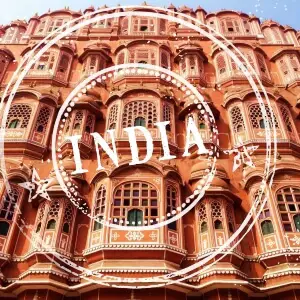
India
Another of the best Asian countries to visit is India; a vibrant, varied and visceral experience. You can stay in a former palace, learn ancient handicrafts like woodblock printing and tie and dye; ride a camel into the desert and sleep under the stars; visit villages where people live as they have for centuries; and be awed by the incredible beauty of the Taj Mahal.
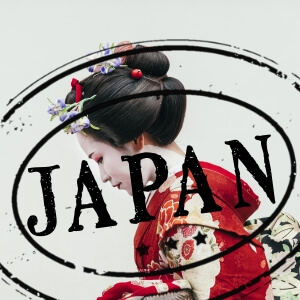
Japan
Japan is a fascinating clash of extremely traditional and strikingly modern cultures, making it another of the best destinations in Asia. Stay in a ryokan (traditional inn) and the next night have dinner in a robot restaurant where you can be entertained by ten-foot robots fighting with laser beams and lights. Or check out the Harajuku girls and geisha. Or visit a moss temple, have a hanami under cherry blossoms and then catch the bullet train to your next destination.
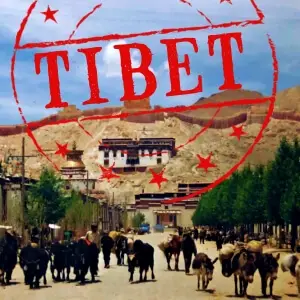
Tibet
Officially part of Chiba, the Tibetan Autonomous Region has still managed to cling to its traditional culture, making it another of the best places in Asia to visit. Visit ancient monasteries thick with the scent of yak butter candles, drink yak butter tea with friendly monks, be amazed by the scenery or even – possibly – witness the making of ephemeral sand mandalas.
Best Things to Do in Asia
Are you wondering what to do in Asia? Here are my pick for the top things to do in Asia.

Mehrangarh Fort dominates the legendary “Blue City”, Jodphur. The ancient fort sits atop a rocky outcrop in the middle of the city. Surrounding it are the blue houses that give the city its nickname. Imagine zip lining from the crenelated towers of the fort across ancient gardens and stepped reservoirs into the surrounding desert hills then back again.
Read more about zip lining in Jodhpur here.

There is no better way to get inside a culture than to learn a traditional handicraft from the artisans who do it for a living. In Sanganer on the outskirts of the “Pink City”, Jaipur, you can go to a single room workshop and learn the ancient craft of printing using wooden blocks from people whose families have been doing it for centuries.
Read more about learning block printing in Jaipur here.

Immerse yourself in traditional Japanese culture by staying in a traditional inn. Ryokans have changed little in more than 1,000 years. Sleep on a futon mattress on a tatami straw mat floor, soak in a hot springs Onsen, wear a yukata robe and eat an incredible multi-course gourmet kaiseki meal.
Read more about staying in a ryokan here.
Discover the best ryokans in Japan here.

Stay in a luxury lodge surrounded by virgin rainforest. Hike into the steamy jungle to see orangutans and red leaf monkeys swinging in the trees, cool off under a waterfall and have tiny fish nibble the dead skin off your feet.
Relax with a cocktail and massage in the evening.
Read more about hiking to see orangutans in Borneo here.

Head out from the magical “Golden City” and mount a camel for a multi-day trek through tiny traditional villages.
Visit local families, relax under a tree in the heat of the day after enjoying a delicious meal cooked on an open fire and sleep on sand dunes under the stars.
Read more about camel safaris near Jasialmer here.
Top 10 Things to Do in Asia
In addition to the five top things to do above, add:
6. Watch the sunrise over Bagan in Myanmar
Seeing the sun rise through the early morning mist over the hundreds of ancient temples in Bagan will be one the most incredible things you will ever do. An early morning balloon ride is a classic way to experience the dawn.
Book a balloon ride over Bagan here.
7. Dive the Similan and Surin Islands in Thailand
This is some of the best diving and snorkeling in the world. Trigger fish, leopard sharks, manta rays, turtles… The list is endless. The islands can be visited by multi-day live aboard dive trips or one-day trips from Phuket, Khao Lak or other points along the coast. The season is October – May.
Book a day snorkeling trip to the Similan Islands from Phuket here
Book a day snorkeling trip to the Similan Islands from Khao Lak here (Khao Lak is closer than Phuket)
Book a day SCUBA diving trip to the Similan Islands here
8. Take the Trans-Siberian train ride
This is arguably the most iconic train journey in the world. Take the Trans-Siberian from Vladivostok, the Trans-Manchurian from Beijing via northeastern China or the Trans-Mongolian from Beijing via Mongolia. Travel through the steppes of Siberia, past Lake Baikal, across the length of Asia and into Europe, ending in Moscow. This epic train trip can be done in one complete 7-day trip or broken up with stops along the way. A word of warning (from a lesson learned firsthand) – don’t try to drink a Russian under the table with vodka. You will NOT succeed!
Check out availability on the Trans-Siberian here.
9. Picnic under cherry blossoms in Japan.
There is nothing quite like sitting under a cloud of pink cherry blossoms, eating an obento lunch box and drinking sake. Join thousands of Japanese in their favorite spring pastime.
Check prices on a five-day trip to Japan to see the sakura (cherry blossoms) here.
10. Take a Thai cooking class in Chiang Mai, Thailand.
Thai food is some of my favorite. Learning how to cook delicious Thai food helps you connect with the culture and gives you skills and recipes you can use at home after your trip.
Sign up for a Thai cooking class in Chiang Mai here
Where to Go in Asia: Asia Travel Itineraries
Are you wondering where to travel in Asia? An Asia travel itinerary can be anything from a layover, a long weekend or several weeks or even months, depending on how long you have, what you like to do and your budget. Classic itineraries include:
- India Golden Triangle [2 weeks]: New Delhi – Jaipur – Agra (Taj Mahal) – Varanasi
- China highlights [2 weeks]: Guilin or Yangshuo (Li River) – Shanghai – Beijing / Great Wall of China
- Thailand [2 weeks]: Bangkok – Islands/ resorts – Chiang Mai
- Japan [2 weeks]: Tokyo > bullet train > Kyoto – Nara – Tokyo
How Much Does it Cost to Travel in Asia?
The cost of travelling Asia depends on which countries you go to. The cheapest countries in Asia to travel include Vietnam, Nepal, Malaysia, India and Sri Lanka. A daily budget for these countries can be as low as $40/ day if you travel on a tight budget.
The most expensive countries to visit in Asia are Hong Kong and Macao, Japan, Singapore and South Korea. Daily expenses range from $90-$140/ day easily.
Essential Information for Travel Through Asia
There are some things you should know about Asia traveling before you go.
Currency
The currencies used throughout Asia are all completely different. For a full list of currencies in Asia, check Wikipedia here. For current exchange rates, check here.
Visas
Many countries in Asia do not require visas for holders of many passports, but this is not true for all countries and regulations change. Always check.
Check out your home country’s official government visa websites for:
For citizens of other countries, use this helpful website (though it’s best to always check with the embassy as well).
Time Zones
Asia is vast. There are ten time zones in Asia. That’s a lot! Click here to see a map of the time zones of Asia.
Note that all of China has one time zone – based on the time in Beijing. Which can make for interesting daylight hours in far-flung western China where, according to the sun, it would be at least three hours different.
Languages
Almost every country has its own language, and many countries like China and India have many dialects or languages.
English is commonly spoken in India (at least by people in the tourist industry and those educated in English language schools). Russian is a common shared language in most former Soviet countries, although most of these countries have their own languages as well. Arabic is commonly spoken in most Middle Eastern countries, though there are different Arabic dialects.
As with most of the world, English is often spoken in the main tourist areas in most places. Get off the beaten path, however, and you may find yourself communicating with gestures and pictures.
The common thing about most Asian languages is that they do not use the Roman alphabet. This can be challenging. Especially when coupled with the fact that several languages sich as Thai, Vietnamese and Chinese are tonal, meaning that the tone used in pronunciation changes meaning. When I was in China, trying to say anything out loud was useless because my pronunciation was so bad no one understood me. I just pointed to words written in my guidebook and got by.
If you will be spending some time in a country or region, it is worth investing a little time in learning the writing if it is an alphabet system. Hangul (Korean writing) is supposedly the most logical alphabet in the world. Cyrillic (the Russian alphabet) has some characters similar to the Latin alphabet that is used for English, so it is pretty easy to learn.
Some languages like Chinese and Japanese use characters rather than an alphabet, so there are literally thousands of characters to learn, each indicating the meaning and pronunciation of a word. Obviously, it is not worth learning thousands of complicated characters for a short trip, but even learning a few common characters can make life a little easier and your trip more enriching.
In Arabic-speaking countries, I found it helpful to learn the numbers, so that I could identify which bus to catch.
How to Get to Asia
Most countries in Asia have a national airline as well as additional budget alternatives. Many Asian airlines like Singapore Airlines, Cathay Pacific, JAL, Korean Air, Etihad and Emirates are among the best airlines in the world. Others are less reliable. Check safety and on-time reports for a cheap airline before booking.
Typically, the airlines of the country you are traveling to or from offer the best deals. However, it pays to shop around.
Check Skyscanner and Momondo for cheap flights. They search thousands of flights to find cheap flights.
How to Travel Around Asia
What’s the best way to travel around Asia? There are several options and the best way to travel Asia varies from country to country, as well as your budget and preferred method of travel.
If you have a lot of time, then travelling to multiple countries is an option, but if you have the usual vacation time that most of us have, it probably makes sense to stick to one or two countries (or even regions within a country) and explore them in more depth.
Plane
If you are hoping to see several places and are wondering how to travel Asia quickly, then the obvious choice is to fly. There are many international and regional carriers, including some incredibly cheap budget carriers. For example, you can find flights from Kuala Lumpur to Borneo for as little as $50 on Air Asia! It’s a no-frills airline, but who cares when the flight is short?
Bus
Buses are common in every country. These can vary from deluxe coaches with comfy seats and videos to uncomfortable former school buses with little leg room and no suspension.
Night buses with beds are available in many countries – but check the state of the roads. Sleeping on a bus traveling on smooth roads will save you a night’s accommodation and you will probably get a good night’s sleep. However, lying down on a bus on bumpy roads is kind of like having a jackhammer for a pillow – not fun and you will not get much sleep (as I have discovered the hard way).
Tuk Tuks, Taxis and Metros
Local transportation within cities also varies. One common way to get around is a tuk tuk. It’s kind of like a three-wheeled motorcycle with a small carriage in back. There is an enclosed section big enough for two people and some luggage.
They won’t have meters, so always negotiate the price in advance and clarify that the fare is for all of you and all your bags and is the complete price, not per kilometer. If helps to have exact change to give them when you arrive. If not, you will find that they rarely have change to give you. And if the price suddenly changes, you can give them what you agreed and walk away.
The same goes for rickshaws (not common these days) or cycle rickshaws (like a tuk tuk, but there is no motor – not the best if you have heavy luggage; slower and cheaper than tuk tuks), and taxis. These are also all great ways to arrange a day tour, with the driver waiting for you at each destination.
Very large cities may also have metros, suburban trains and local buses. Check in advance whether or not you can pay onboard or if you need to buy tickets or a pass before you board.
Train
Trains are common in many countries like India, China and Japan. In India, they are often slow and rarely stay on schedule (but are very cheap). They are reliable to the second in Japan (but can be expensive- a JR Rail Pass for Japan Rail can help. You can only buy them outside Japan. You can buy one here.)
Car
In most countries in Asia, I do not recommend driving as you way to travel across Asia because the traffic can be chaotic, road rules are not readily apparent and the state of roads can be mixed, to say the least.
It is often possible, however, to hire a car with driver for not much money. This is certainly true in India. I did this several times and it saved a lot of time, and was more comfortable than the bus and more flexible than public transportation, so we could stop off along the way and visit some temples.
Where to Stay in Asia
There are plenty of different accommodation options in Asia. At the top end are super deluxe five star hotels. The best of these have a local flair, like staying in a former palace in Rajasthan, India or a ryokan in Japan (read exactly what to expect in a ryokan here) where the service and food are second-to-none. In general, I prefer staying in places with a local flavor, so that I feel like I am in another country. They don’t need to be expensive of course. There are many hotels in the mid-price range that have lots of character.
Small inns or BandBs are another option that typically give you a more personal touch.
There are also plenty of chain hotels (e.g. Hilton, Intercontinental, Holiday Inn and Marriott), and sometimes this can be a welcome comfort after spending the days in an unfamiliar environment. When I travel on business, I like these hotels, because they are set up for the business traveler.
At the budget end, there are many cheap hotels and hostels to choose from too.
Choosing a hotel is a very individual decision, and what is perfect for me is not a good choice for someone else. To help take the pain and mystery out of choosing the perfect hotel for you, read my guide on Choosing the Perfect Hotel.
If you are looking for a ryokan in Japan, check out my list of the best ryokans in Japan.
Unique Hotels in Asia
There are also options for something more unusual. Check out just of a few of the hotels that are an experience in and of themselves:
- Conrad Maldives Rangali Island, Maldives. Sleep in a classic over-the-water bungalow, but dine in their underwater restaurant with glass walls and ceiling and fish swimming right past you! Check prices and availability here.
- Taj Lake Palace, Udaipur, India. Stay in a sumptuous former palace on an island in the middle of a lake in the middle of the “White City” of Rajasthan. Check prices and availability here.
- Container Hotel, Kuala Lumpur, Malaysia. Stay in a hotel made of shipping containers. It’s nicer than it sounds! Check prices and availability and see photos here.
- Hang Nga Guesthouse | Đà Lạt, Vietnam This weirdly shaped building deserves its nickname “Crazy House”. A distorted fantasy. Check prices and availability here.
- 4 Rivers Floating Lodge, Koh Kong, Cambodia Tented bungalows “floating” on the river. This is glamping at its best. Check prices and availability here.
The Best Time to Visit Asia
The best time to travel to Asia depends on where you are going. Some Asian weather phenomena to keep in mind:
- Many tropical countries have a monsoon or wet season (typically June to September). It often just rains intensely and briefly in the late afternoon, however, so it is often still possible to travel during the monsoon.
- There is a typhoon (hurricane/ tropical cyclone) season around Hong Kong, Korea and Japan from May to early November, with July – September being the peak period.
- Spring sees frequent dust storms in northern China, including Beijing, as the dust from the Gobi Desert gets whisked across the land.
Asia Travel Tips
Tips for staying safe in Asia
Here are some tips for travelling Asia safely.
1. Scams
Some countries like Japan and Korea are incredibly safe (though of course things can happen anywhere, so you should always be cautious), but other countries are more well known for scams. If you are aware of common scams, then you can become aware of them easily when they are happening, and can therefore avoid them much more easily. It’s important to be vigilant without being paranoid. Check out common travel scams and how to avoid them here.
2. Travel Insurance
My biggest safety tip is to get Travel Insurance. If you get sick or something gets lost or stolen, there is great comfort in knowing that you will be taken care of. There are key things that you should look for when choosing your travel insurance. Read my article on Choosing the Best Travel Insurance for a full low-down.
I recommend Travelex. It has coverage for all you’ll need. You can choose the best travel insurance plan for your trip here or get a quote right now:
Tips for staying healthy in Asia
There are some basic precautions to take to stay healthy and avoid Delhi Belly (or the local equivalent).
1. Drinking Water
The tap water isn’t always safe to drink. If it isn’t (or even if you are just not sure if it is), avoid it. This includes ice (in your cocktail), washed fruits and vegetables (salads, fruit salads, a leaf of lettuce your meat is sitting on), brushing your teeth, water splashing in your mouth when you shower.
TIP: One of my key Asia tips it to skip ice and salads. Drink bottled water and even use it to brush your teeth. In order to try and reduce the amount of single-use plastics, you can take a water bottle with you, and buy water in big bottles, then fill up your water bottle from that. I like the Que water bottle, because it gets smaller when not in use. Check prices and details here.
2. Street Food
Be careful with street food. Street food is a great way to get into the culture and try fun local foods. However, it can also be a surefire way to spend several days hugging a toilet bowl (or worse, if they have drop toilets). If in doubt, don’t try it, but it can be tempting.
TIP: As a general rule, if it’s been sitting out for a while, give it a miss. Popular stands with high turnover are safer because the food hasn’t been sitting cooked, gathering germs in the sun for hours. Be aware, though, that it’s still not that safe. Read a more comprehensive Guide to Foodie Travel here.
Etiquette in Asia
Cultures vary greatly throughout Asia, but there are many cultural aspects that are true in many countries
1. Feet are dirty, the head is holy
This is true in many cultures, especially Buddhist ones. Don’t point your feet at people (which can be tricky when you are kneeling in a temple and your knees start to ache).
TIP: Always take off your shoes in Buddhist temples and mosques.
2. Saying “no” is rude in many cultures
This includes India and Japan. Direct responses are considered too abrupt. Therefore, if you ask for directions and the person doesn’t know the answer, rather than disappointing you by admitting that they don’t know, they will give you incorrect directions, based on their best guess. This is culturally appropriate and meant to be polite, not mean.
TIP: If in doubt, ask several people.
TIP: Avoid asking yes/ no questions. Remember that they will always answer yes, rather than saying no. Ask open-ended questions instead to increase the chance of getting an accurate response.
3. Personal Space
Be aware that personal space can be different. So try not to be offended by crowding and pushing. If you’re in a line and people keep cutting in, you face three choices – join them, relax and let them or (if available) seek out the special window or office for foreigners.
4. Foreigner Prices
There are often different prices for foreigners. When I first encountered this, many years ago, it annoyed me. However, it doesn’t bother me anymore. Often the ticket prices are helping preserve an attraction or get you extra services. It is impossible for local people to afford these prices, and the prices are usually about what you’d pay back at home anyway. Appreciate that you are helping the local economy while local people can still afford to be tourists in their own countries.
5. Squat toilets
Squat toilets/ drop toilets are a reality in many Asian countries. Even Japan has both “Asian-style” and “western-style” toilets in many places. Squatting is actually considered better for your body when doing your business, so you can take some comfort in that. If this is new to you, check out How to Use a Squat Toilet here.
Best Booking Resources for Travel to Asia
Are you ready to plan a trip around Asia? These are the resources I use to plan my Asia trips.
For booking tours and activities
- Viator They have great activities. You can search by categories such as Classes & Workshops and Cultural & Theme Tours.
- Klook For Asia, I also like Klook. They have a largely Asian focus, so have a lot of great tours and experiences to book.
For booking flights
- Skyscanner They search a huge database of flights, including many budget airlines, to find the cheapest price
- Momondo I always check this website too, as sometimes there can be a difference of a few dollars between the sites.
For booking trains
- JR Rail Pass Get a Japan Railways Pass if you are travelling by train quite a bit.
For finding a rental car
- Rentalcars.com I use this website to find the cheapest cars for my trips.
For booking accommodations
- booking.com They have a huge selection and you can filter by price, location and type of accommodation.
- Air BnB For longer stays in the same place, it can be nice to live like a local and stay in an apartment. They can also often be cheaper than a hotel. There are many Air BnBs in Asia.
For buying gear
- Amazon A huge selection of travel goods.
- REI They have a great mission and great products, especially for outdoors and hiking.
For travel insurance
- Travelex My go-to travel insurance company. Before making a final decision, check out my Guide to Buying the Best Travel Insurance.
Things to Pack for a Trip to Asia
Packing for a trip can be stressful. So, what to pack for a trip around Asia?
TOP THREE THINGS TO PACK FOR A TRIP TO ASIA
1. Plug and voltage adaptor with surge protection. Electricity varies between countries in terms of the voltage and the plugs used. Electricity in many developing countries is also prone to surges, in which high voltages of electricity surge through the wires randomly, blowing out sensitive electronics. Therefore, I always travel with a combination plug and voltage adaptor with surge protector in Asia. I like this one because is all three in one, and has three outlets, so I can recharge several things at once. Check prices on Amazon here.
2. Camera or cell phone and accessories and chargers. Asia is very photogenic and you will want to make sure you can take loads of photos. Whether that is with a camera and/ or a Smartphone, you will need to consider how to charge them. Think, too, about what accessories will help you take better photos.
Check out prices on:
A GorillaPod trip for your camera
A GorillaPod tripod for your Smartphone
3. Water bottle. There are many countries in Asia where the tap water is not safe to drink. This will mean you need to buy bottled water. Which all come in single use plastic bottles. As a way to try and reduce use of these plastic bottles, buy large bottles of water (that use plastic per volume of water), travel with a refillable water bottle and fill up with water from the large bottle you bought. I am loving the Que bottle, because it shrinks down smaller when you don’t need it. Check out different sizes for the Que bottle here.
Before you go, check my international travel packing list here. This travel essentials list includes everything you will need for your trip to Asia.
Extra things to pack for Asia in addition to the general travel packing checklist include an Asia travel book. I like the Lonely Planet books. Order the Lonely Planet Guide Books for your Asia trip here.
The best backpack for travelling Asia is the Safe Back Pack. It has loads of built in safety features and can be carried like a backpack, which is great for getting to and from the hotel and train station. However, it opens like a suitcase so you don’t have to rummage to the depths of a vertical pack looking for something and the straps can be hidden away so that it looks like a soft suitcase.
Check prices on the different sized Safe Back Packs here.
Other things on your Asia travel packing list should be:
- Insect repellent/ bug spray. If you are going anywhere tropical, you will want to make sure you have a string insect repellent with you. A strong one is Repel 100 (check the price on Amazon here).
- Rain cover for your bag. Bags sometimes end up on the roof of a bus. There is nothing worse than getting everything you have with you wet because it rained while your bag was out in the open. To prevent this, cover it with a rain cover. Check out a rain cover for your bag here.
- Hand sanitizer. You may feel like you are being a germophobe, but it is better to feel like that than get sick. With tap water not always safe or even available, I always carry a small bottle of hand sanitizer with me to use before I eat. Get a handy six-pack here.
- Deodorant. Deodorants in many Asian countries are not as strong as the ones you may be used to. When I lived in japan, I would have deodorant sent to me from home.
Best Travel Guide Books for Asia
The best choices for an Asia travel guide book is a Lonely Planet book. They have them for a large number of Asia travel destinations.
You can check out Lonely Planet’s online store and browse for the specific country, region or city you are going to visit, or look here on Amazon.
Suggested Reading: Best Books about Asia
Here are some of my favorite books about Asia and books set in Asia. They are a mix of serious and fun, fiction and non-fiction. I hope they will inspire your trip and they are also good books to read while traveling to Asia.

Wild Swans: Three Daughters of China (2003), Jung Chang
This is a fascinating story of three generations of women set during the Cultural Revolution and communist China. An easy intro into this era of Chinese history.
Riding the Iron Rooster: By Train Through China (2006), Paul Theroux
Theroux spends a year traveling across China by train. I did this myself for three months, so I can relate to this book. The singular worse train journey of my life was 19.5 hours in an overcrowded “hard seat” from Shanghai. There were plenty of experiences that were more positive too, of course. In this travel book, Asia, and in particular China, is seen in detail through Theroux’s eyes. An interesting read if you are going to China.
Shogun (1975), James Clavell
A little overblown, but an easy (albeit long) read set in feudal Japan. It tells the story of an Englishman blown ashore in the 17th Century when Japan was closed to foreigners. Clavell tells a good story, and brings Japanese society back then to life. It was turned into a mini-series, but the book is better. A real page-turner.
Crazy Rich Asians trilogy (2013-18), Kevin Kwan
A totally trashy read – but so much fun you won’t be able to put it down. The first book has been turned into a movie, but don’t skip the book. There are a couple more in the series too, so get the whole trilogy. You will love (and/ or be grossed out by) the over-the-top wealth of Asia’s elite. A guilty pleasure!
Memoirs of a Geisha (1999), Arthur Golden
Another book that’s been turned into a movie. When I first read this, I couldn’t believe it wasn’t a real autobiography. It isn’t. It’s written by a white guy, not a Japanese woman. Golden brings to life the hidden world of geishas in the years leading up to and beyond WWII. This is one of my favorite books of all time.
Book Your Asia Travel Now
If you are ready to book your Asia trip travel, here are some resources to help you. I use these resources for my own travels and find them incredibly helpful.
For booking tours and activities
- Viator They have great activities. You can search by categories such as Classes & Workshops and Cultural & Theme Tours.
- Klook For Asia, I also like Klook. They have a largely Asian focus, so have a lot of great tours and experiences to book.
For booking flights
- Skyscanner They search a huge database of flights, including many budget airlines, to find the cheapest price
- Momondo I always check this website too, as sometimes there can be a difference of a few dollars between the sites.
For booking trains
- JR Rail Pass Get a Japan Railways Pass if you are travelling by train quite a bit.
For finding a rental car
- Rentalcars.com I use this website to find the cheapest cars for my trips.
For booking accommodations
- booking.com They have a huge selection and you can filter by price, location and type of accommodation.
- Air BnB For longer stays in the same place, it can be nice to live like a local and stay in an apartment. They can also often be cheaper than a hotel. There are many Air BnBs in Asia.
For buying gear
- Amazon A huge selection of travel goods.
- REI They have a great mission and great products, especially for outdoors and hiking.
For travel insurance
- Travelex My go-to travel insurance company. Before making a final decision, check out my Guide to Buying the Best Travel Insurance.
What’s on your Asia bucket list? Comment below.
If you liked this post, share the love and Pin It to your Asia Travel board.
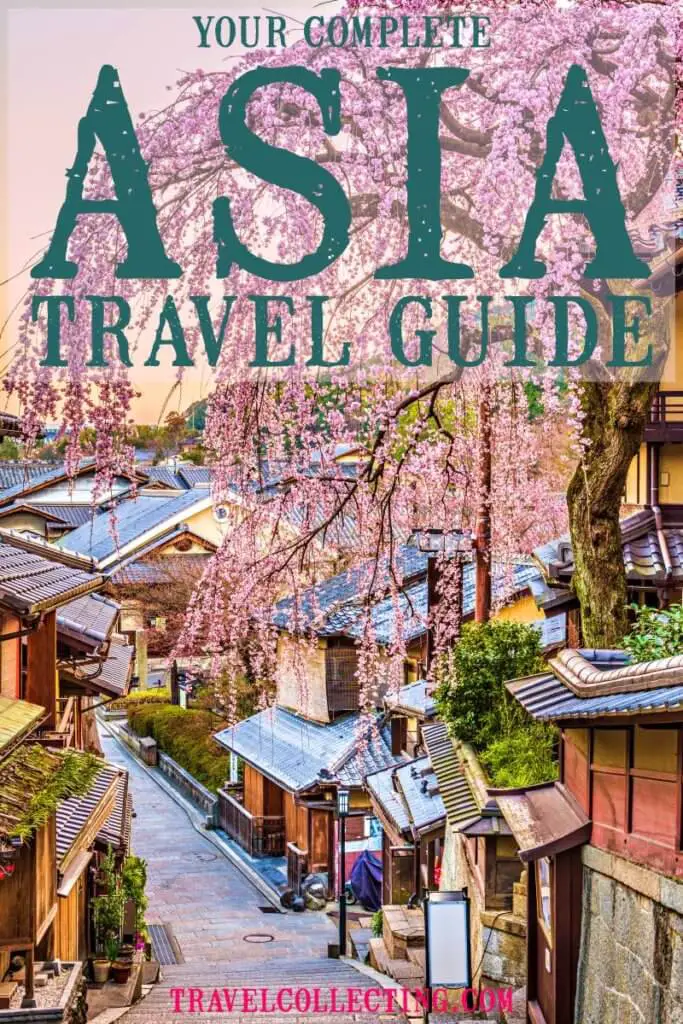
About the author

Travel Collecting is a participant in the Amazon.com Services LLC Associates Program. As an Amazon Associate I earn from qualifying purchases.







